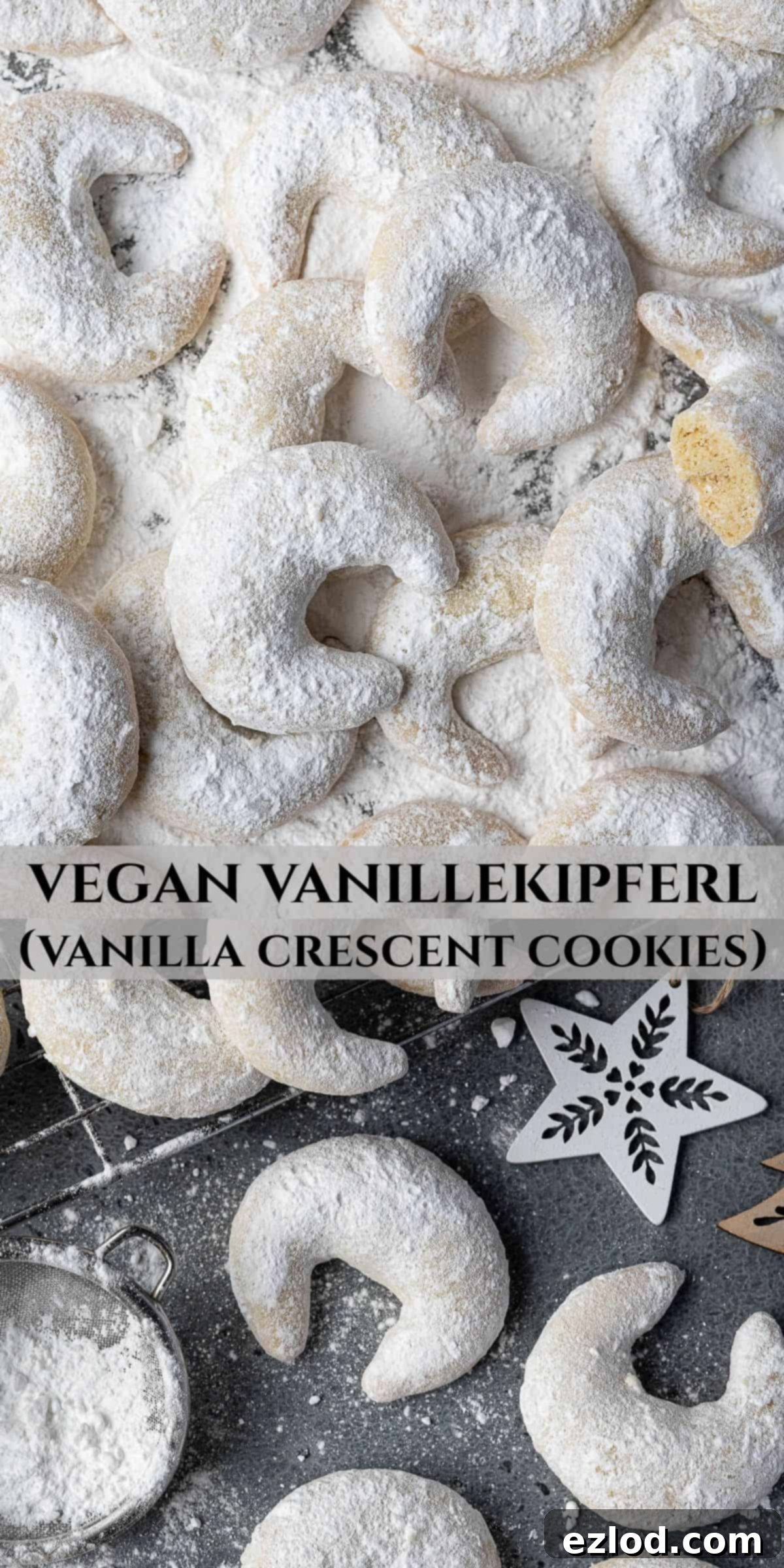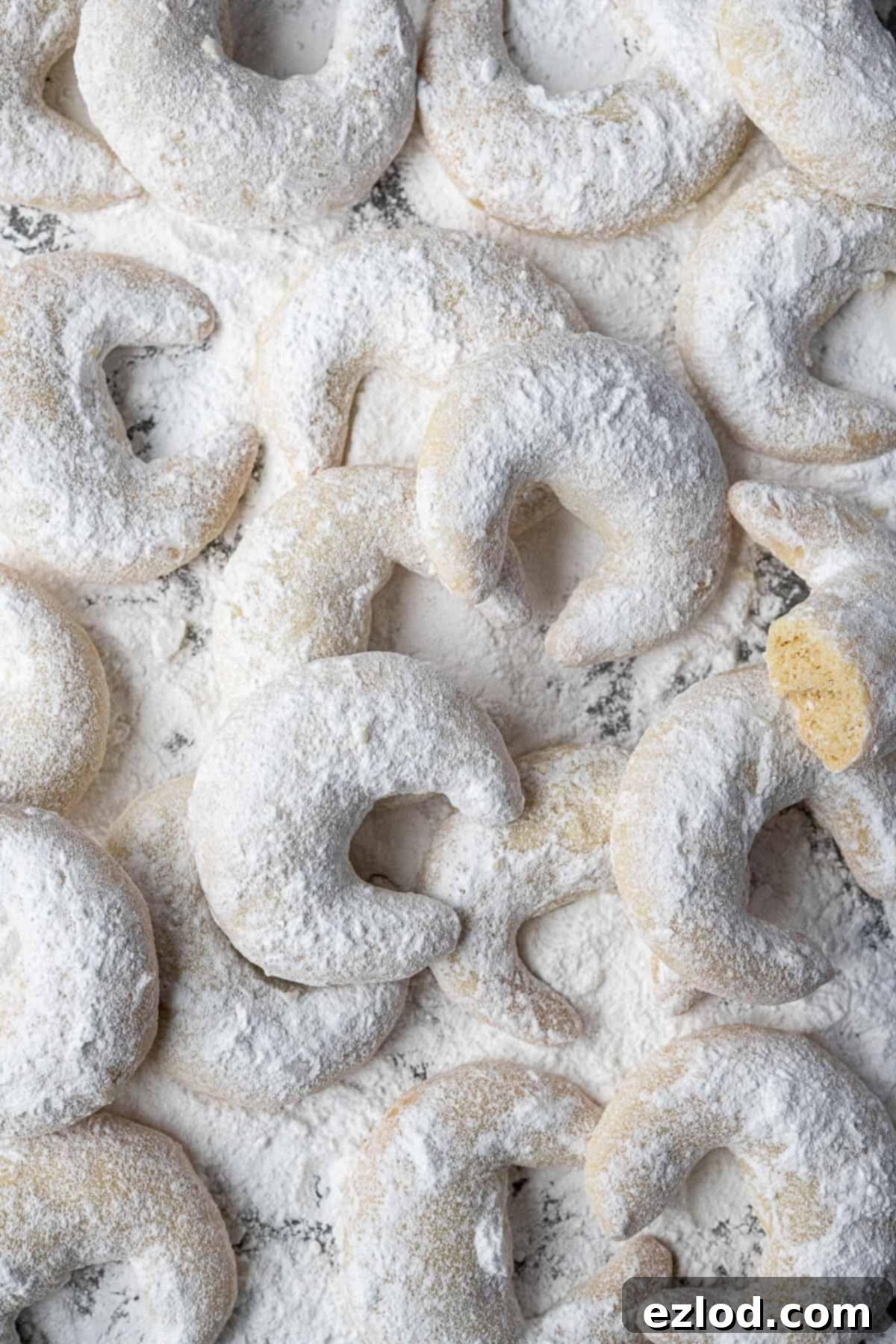Vegan Vanillekipferl: The Ultimate Melt-in-Your-Mouth Vanilla Crescent Christmas Cookies
Indulge in the magic of the holiday season with these exquisite Vegan Vanillekipferl. These delightful Austrian/German Christmas cookies are surprisingly easy to master, resulting in light, crisp, and truly melt-in-your-mouth crescent-shaped treats.
Each bite offers a delicate balance of vanilla and almond flavor, complemented by a wonderfully crumbly texture and a snowy dusting of powdered sugar. These festive biscuits are not just a tradition; they are a must-have for your Christmas celebrations!
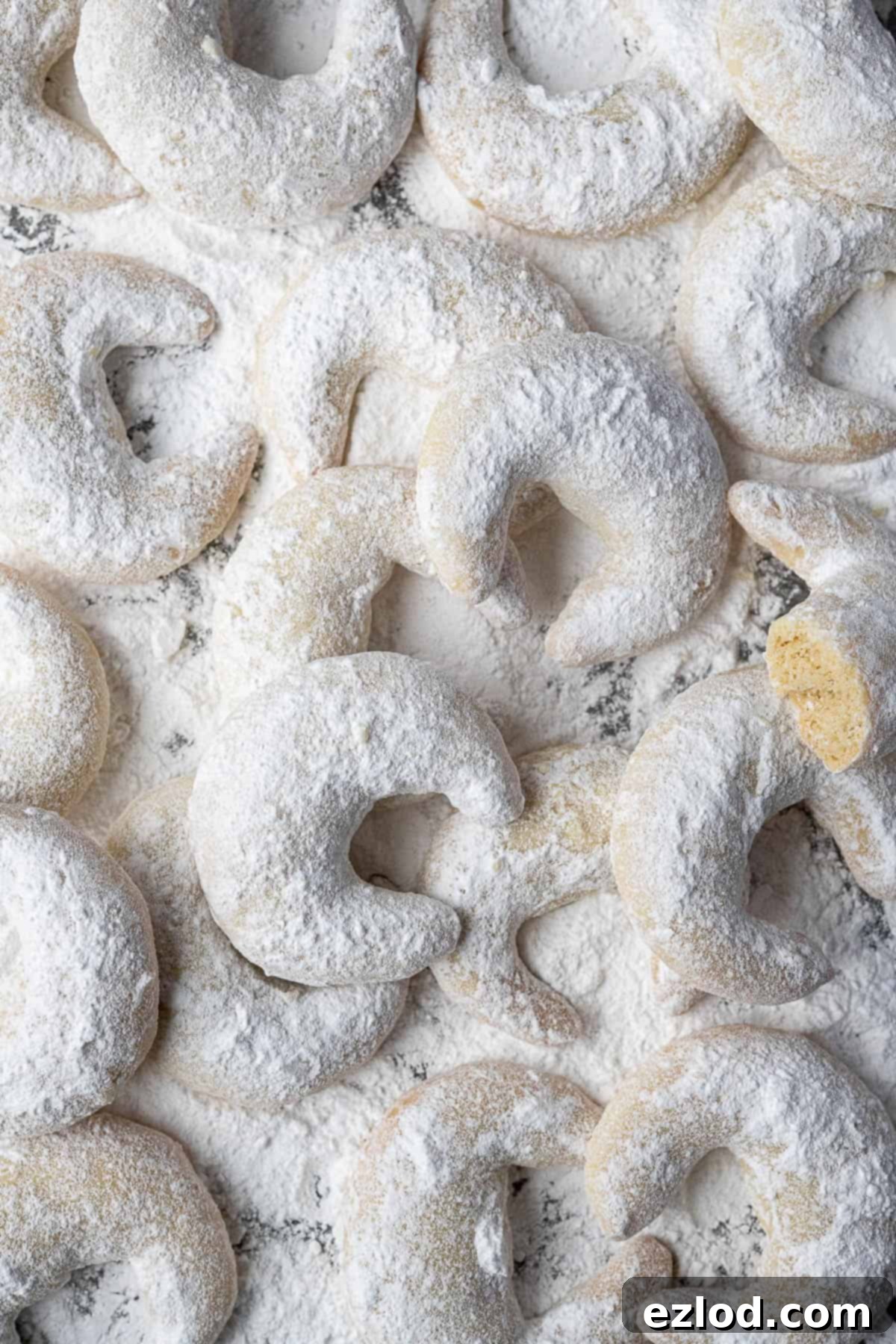
These vegan vanillekipferl are more than just a cookie; they are a timeless European Christmas classic that truly deserves a cherished spot in your festive biscuit tin this year. Imagine the joy of sharing these enchanting treats with family and friends, or simply savoring them with a warm cup of coffee or tea during the cozy holiday evenings.
While the process of shaping these crescent moon cookies might appear slightly intricate at first glance, rest assured, they are far from difficult to make. The effort invested is undeniably worth it, as the resulting biscuits are so incredibly delicious and more-ish that they’ll quickly become a cherished part of your annual holiday baking tradition!
What Exactly Are Vanillekipferl?
Vanillekipferl, literally meaning “vanilla crescents,” are a beloved type of shortbread-style biscuit, traditionally shaped into delicate crescents. They are renowned for their rich, buttery flavor and their characteristic light, crumbly texture that truly melts in your mouth. A key feature is their generous dusting with vanilla-infused powdered sugar, which gives them their iconic snowy appearance and enhances their aromatic vanilla profile.
These delectable cookies boast a rich culinary heritage, originating in Austria. However, their popularity extends far beyond, making them a very common and much-loved Christmas cookie in Germany and various other Central European countries. They are intrinsically linked with the festive season, traditionally baked and enjoyed during Advent and throughout Christmas. What makes them particularly interesting for those seeking plant-based options is that, unlike many traditional cookies, authentic Vanillekipferl recipes are often made without eggs, making them remarkably easy to adapt into a vegan-friendly version.
The dough for Vanillekipferl typically incorporates ground nuts, which contribute significantly to their unique flavor and tender texture. Common choices include ground almonds, hazelnuts, or walnuts. For this recipe, we’ve opted for ground almonds, primarily because they are widely available and provide a wonderfully subtle nutty flavor that perfectly complements the vanilla. The ease of purchasing pre-ground almonds also streamlines the baking process, ensuring anyone can enjoy these traditional treats.
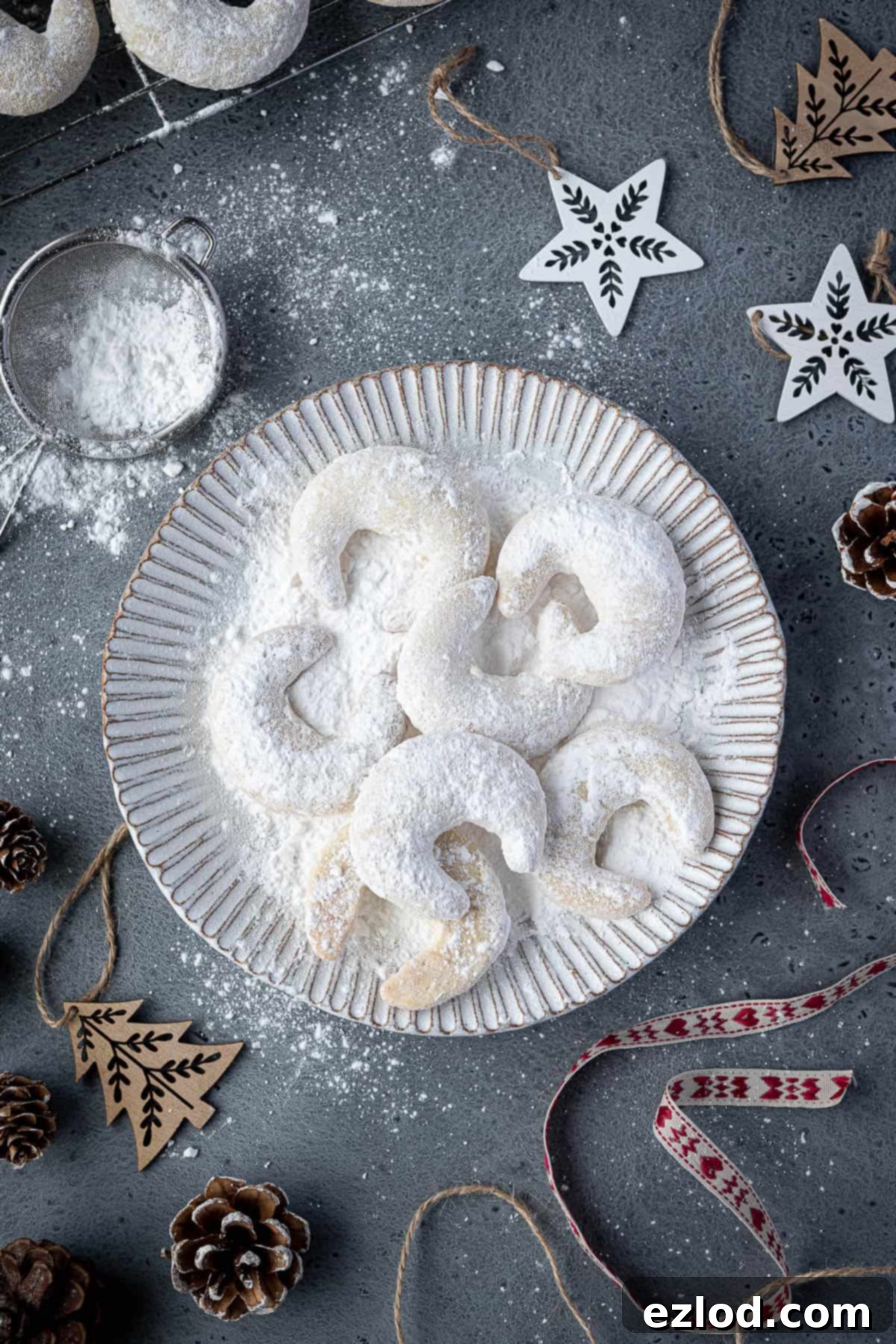
Essential Ingredients for Vegan Vanillekipferl:
Crafting the perfect vegan Vanillekipferl relies on a few key ingredients, each playing a crucial role in achieving that signature melt-in-your-mouth texture and delicate flavor. Here’s a detailed look at what you’ll need:
Plain Flour (All-Purpose Flour): This is your foundational ingredient, providing the structure for the cookies. Regular plain (all-purpose) flour is absolutely ideal for this recipe. Its moderate protein content ensures a tender crumb without making the cookies tough. While I haven’t specifically tested a gluten-free version of these Vanillekipferl, using a good quality gluten-free all-purpose blend with xanthan gum might work, but results may vary.
Ground Almonds (Almond Flour): These are absolutely essential for achieving the characteristic texture and flavor of Vanillekipferl. Ground almonds contribute a delicate richness and an unmistakable crumbly tenderness that you simply can’t achieve with flour alone. In the UK, it’s typically referred to as “ground almonds,” while in the US, “almond flour” is the more common term. Be sure to use finely ground almonds for the best results. If you prefer a slightly different flavor profile, ground hazelnuts or walnuts can also be used, offering their own unique nuances to the cookies.
Vegan Block Butter: This is arguably the most critical ingredient for nailing the texture of these cookies. Please, for the love of holy baking, use a solid block butter or margarine, and NOT the spreadable kind that comes in a tub. The difference is significant: spreadable margarines contain a higher water content and less fat, which can make your dough too soft and lead to tougher, less tender biscuits. Block butter, on the other hand, has a higher fat content and behaves much more like traditional dairy butter, resulting in that perfectly crisp and tender Vanillekipferl texture. I highly recommend brands like Naturli Vegan Block or Flora Plant Butter for excellent results.
Icing Sugar (Powdered Sugar): Icing sugar serves a dual purpose in this recipe. Firstly, incorporating it directly into the dough contributes to the cookies’ incredibly light, delicate, and melt-in-the-mouth texture. Its fine consistency ensures there are no grainy bits. Secondly, a generous dusting of icing sugar (often mixed with vanilla sugar) after baking gives these cookies their classic “snow-covered” appearance, adding to their festive charm and sweetness.
Vanilla Extract: Given that “vanilla” is in the name, the quality of your vanilla extract truly matters here. Using a good quality, pure vanilla extract will infuse your Vanillekipferl with a rich, authentic vanilla aroma and taste. For an even more intense and luxurious vanilla flavor, vanilla bean paste would be an absolutely amazing substitute, as it contains tiny specks of vanilla bean for visual appeal and an unparalleled depth of flavor.
Vanilla Sugar: This ingredient is used specifically for coating the Vanillekipferl after they’re baked, providing an extra layer of exquisite vanilla flavor. While it’s a common baking staple in many European countries, it can be a bit trickier to find in places like the UK or US. Don’t worry, it’s incredibly easy to make your own at home! If you can’t get your hands on it or prefer not to make it, the cookies will still be delicious coated solely in icing sugar, though the vanilla sugar does add an authentic touch.
How to Make Your Own Vanilla Sugar:
Vanilla sugar is a wonderful ingredient that adds a delightful aromatic depth to baked goods, and it’s especially integral to the authentic flavor of Vanillekipferl. While it’s readily available in many European grocery stores, it can be less common in other regions. The good news is, making it at home is incredibly simple and much more economical than buying it pre-made.
To prepare your own vanilla sugar, you will need granulated sugar and a vanilla bean. The process is straightforward: simply combine about 300g (approximately 1.5 cups) of granulated sugar with the seeds scraped from one vanilla bean. You can then blitz this mixture in a blender or food processor. The goal is to blend it until the vanilla seeds are evenly distributed throughout the sugar and the sugar itself is finely ground, achieving a texture somewhere between caster sugar and icing sugar. This fine texture allows the vanilla aroma to infuse more effectively and helps the sugar adhere better to the cookies.
After blending, don’t discard the scraped-out vanilla pod! Store your freshly made vanilla sugar in an airtight jar along with the used vanilla pod. The pod will continue to infuse the sugar with its exquisite aroma over time, deepening the vanilla flavor. Stored properly, your homemade vanilla sugar will keep for ages, ready to elevate all your baking projects.
If, for any reason, you find yourself unable to get hold of vanilla beans or prefer not to make vanilla sugar, don’t let that deter you from making these cookies. You can simply coat the Vanillekipferl with plain icing (powdered) sugar. They will still be absolutely delicious and delightful, though they might lack that subtle extra layer of vanilla complexity that the vanilla sugar provides.
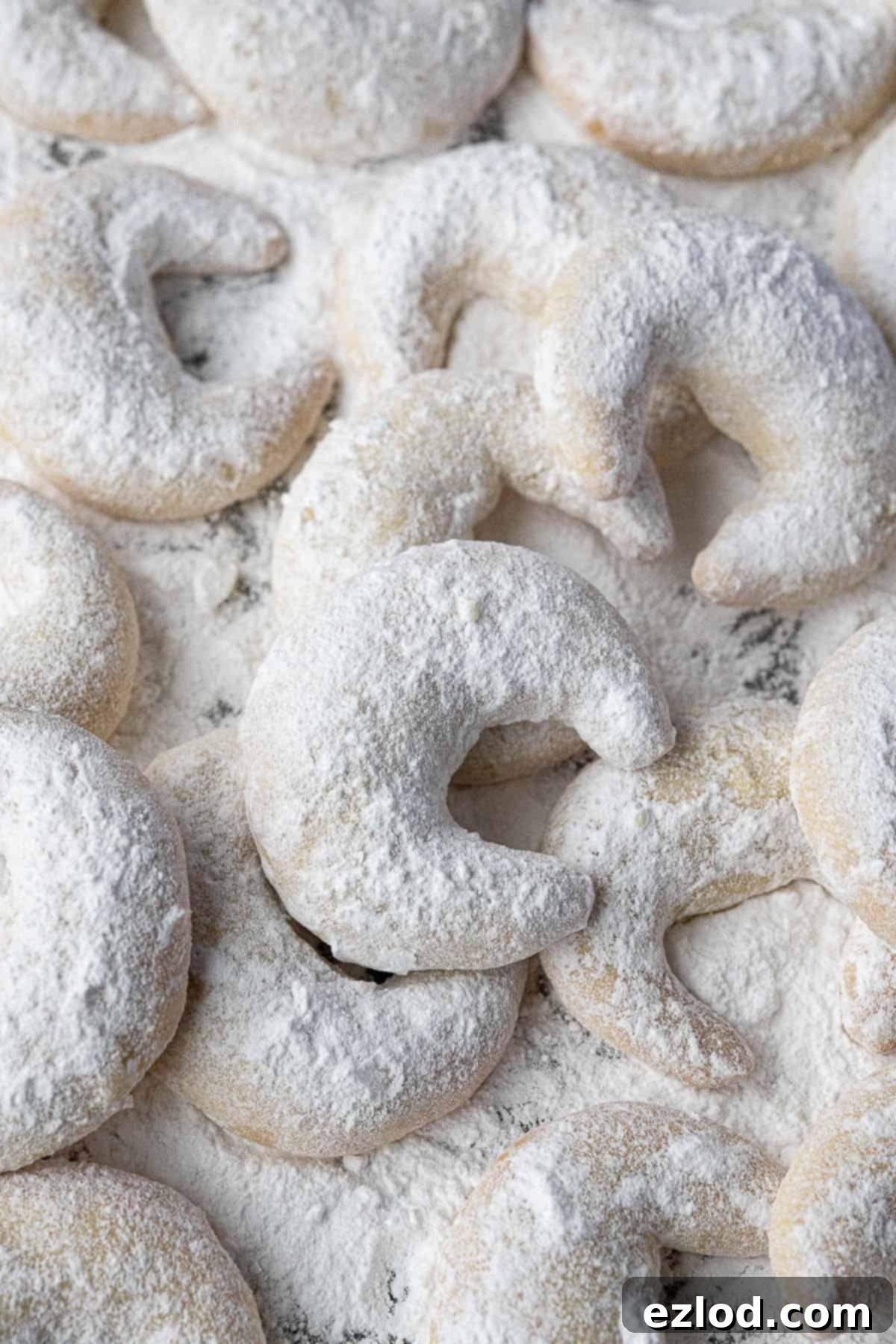
How To Make Vegan Vanillekipferl: A Step-by-Step Guide
(For precise measurements and detailed instructions, please refer to the comprehensive recipe card located at the bottom of this page.)
Preparing the Dough:
- Begin by combining all your dry ingredients: the plain flour, ground almonds, and icing sugar in a large mixing bowl. Whisk them together thoroughly to ensure they are well mixed and evenly distributed. This step is crucial for an even texture in your final cookies.
- Next, add the cold, diced vegan block butter and the vanilla extract to the dry mixture. Using your fingertips, rub the butter into the flour mixture. Continue this process until the mixture resembles fine breadcrumbs and no large lumps of butter remain. The goal is to coat all the flour particles with fat, which prevents gluten development and creates a tender, crumbly cookie.
- Once the butter is fully incorporated, bring the mixture together to form a soft dough. Knead it very gently, just a couple of times, until it forms a smooth, cohesive ball. Be careful not to overwork the dough, as excessive kneading can develop gluten and make your cookies tough. Wrap the dough tightly in cling film or beeswax wrap and refrigerate it for at least two hours, or until it is firm enough to handle without sticking. This chilling period is essential for preventing the cookies from spreading excessively during baking.
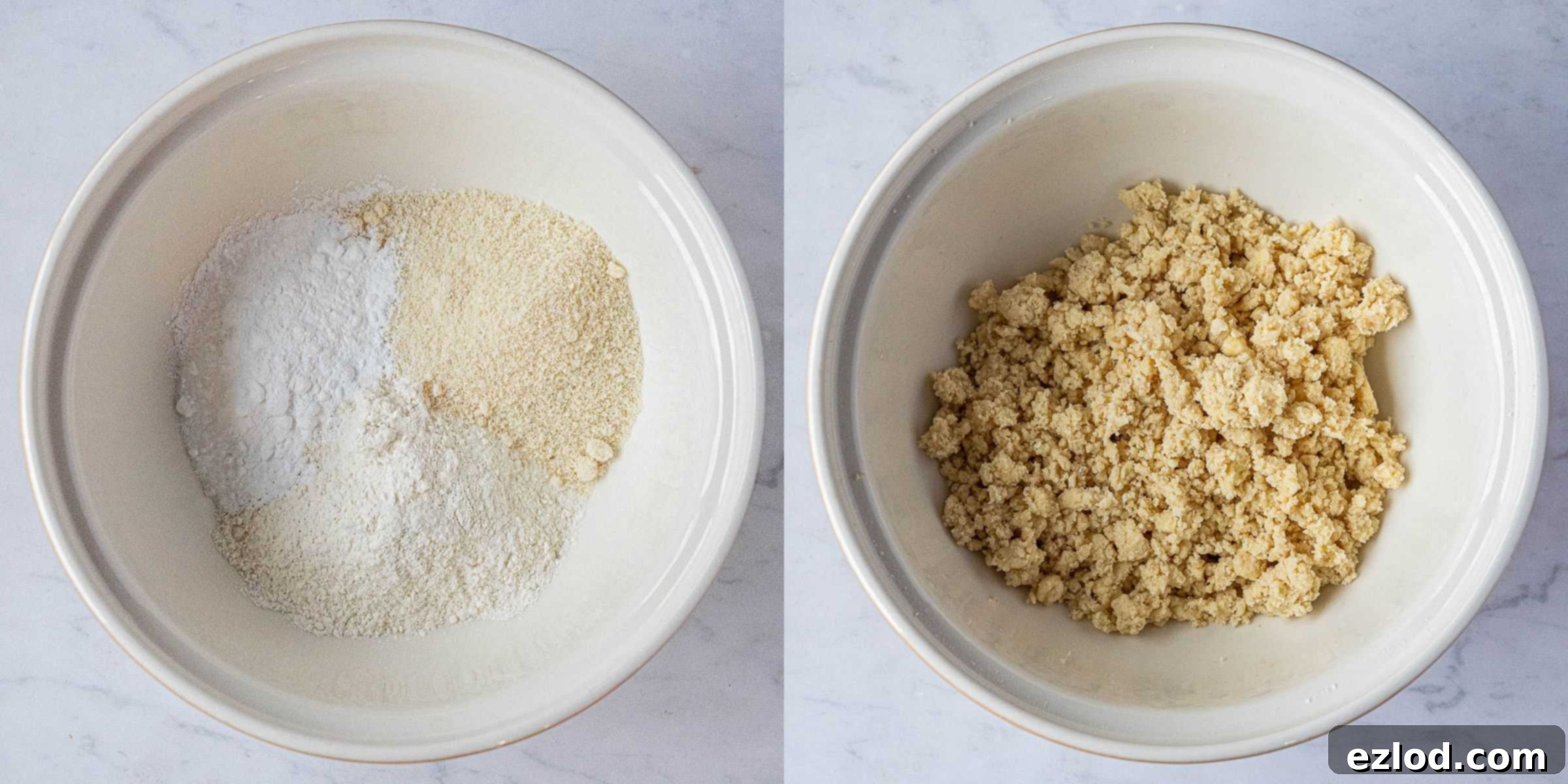
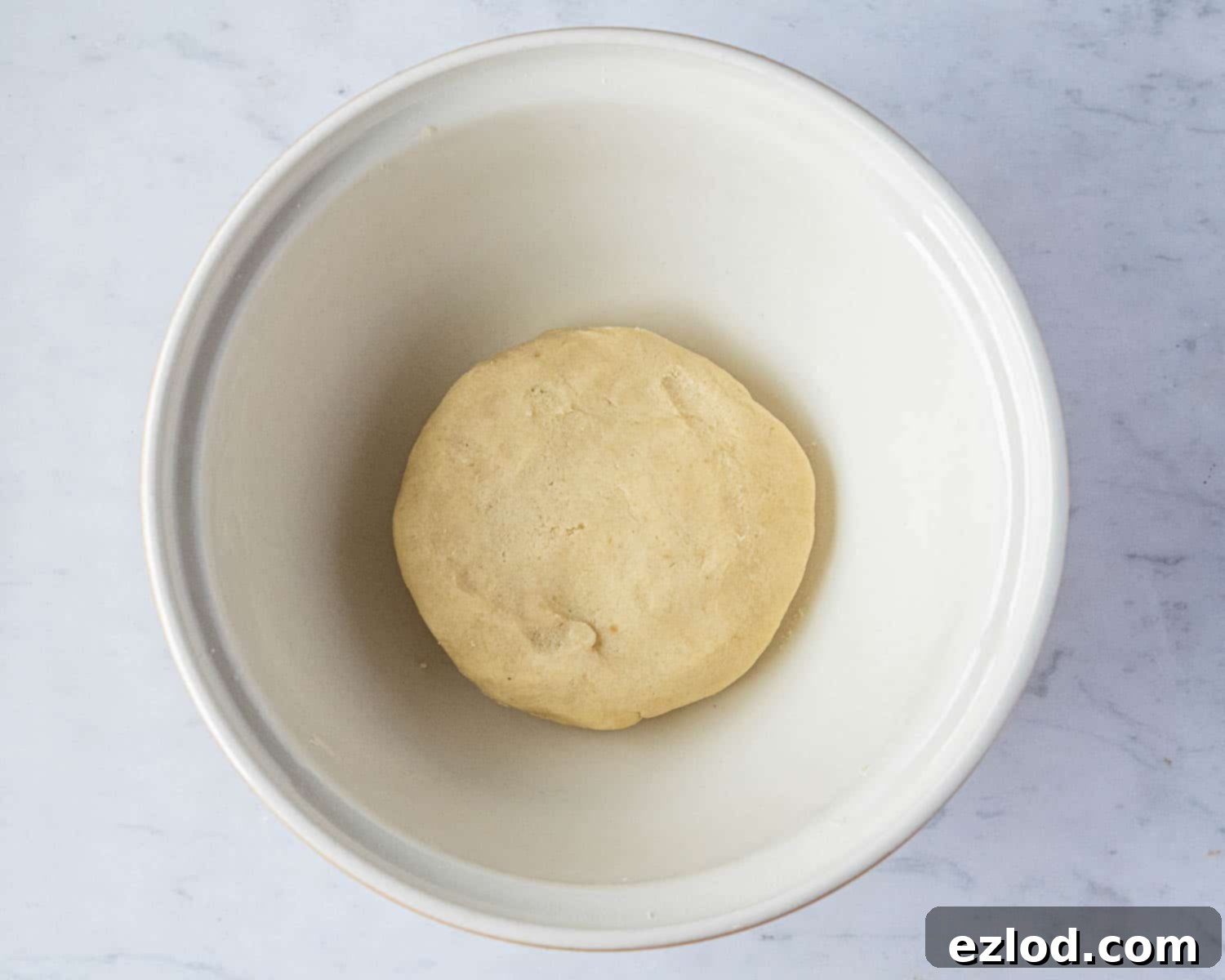
Shaping the Crescents:
- Once the dough is firm, remove it from the fridge. Divide the dough into 20 equal pieces. For maximum consistency, I recommend weighing each piece (around 16g each) to ensure uniform cookies that bake evenly. Roll each piece into a neat ball.
- Take each ball and roll it into a log shape on a lightly floured surface, aiming for a length of about 5-6 cm (2-2.5 inches). Gently taper the ends of the log to create the classic crescent shape. Then, carefully curve the log into a beautiful crescent moon. Consistency in shape is key here for an aesthetically pleasing batch.
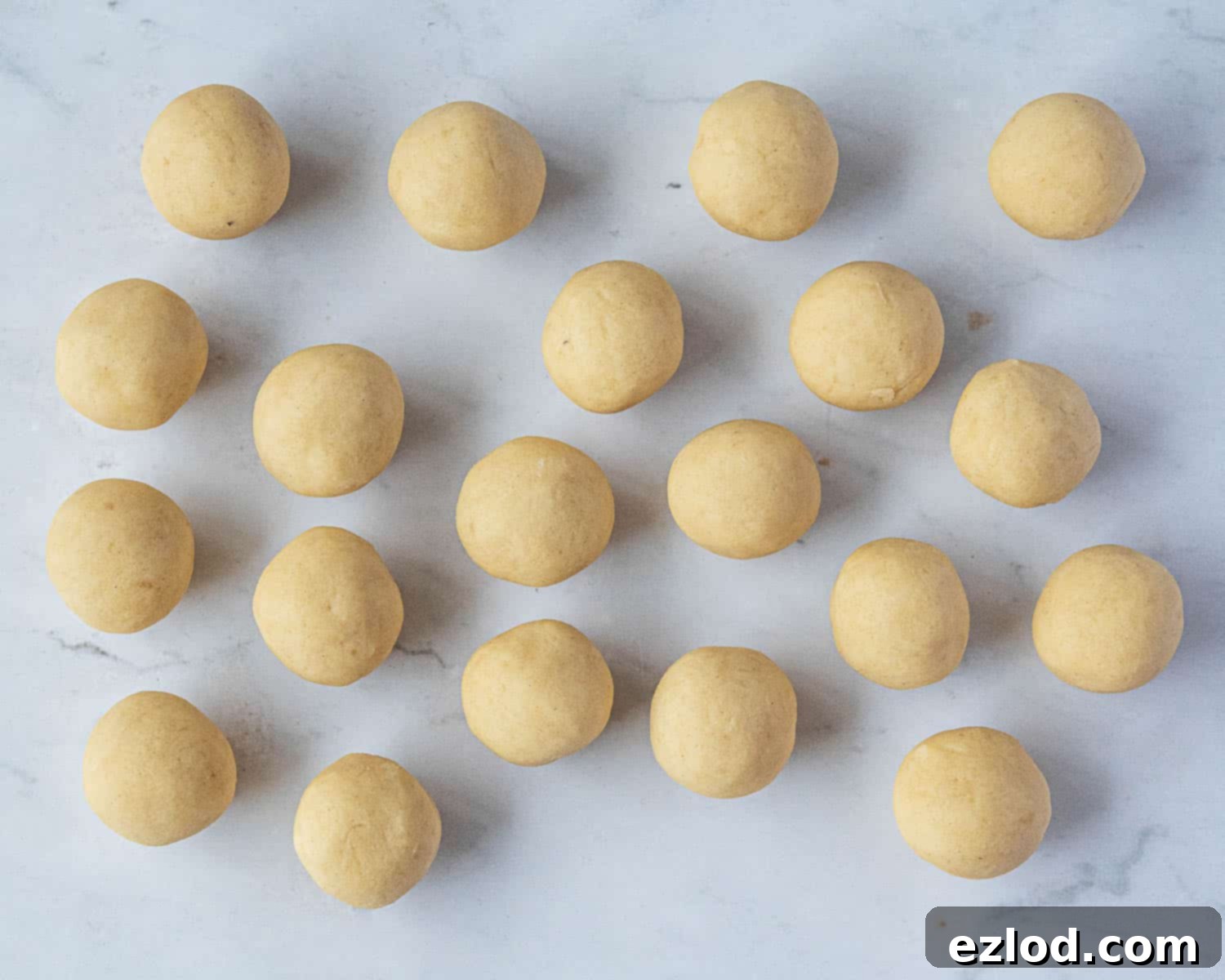
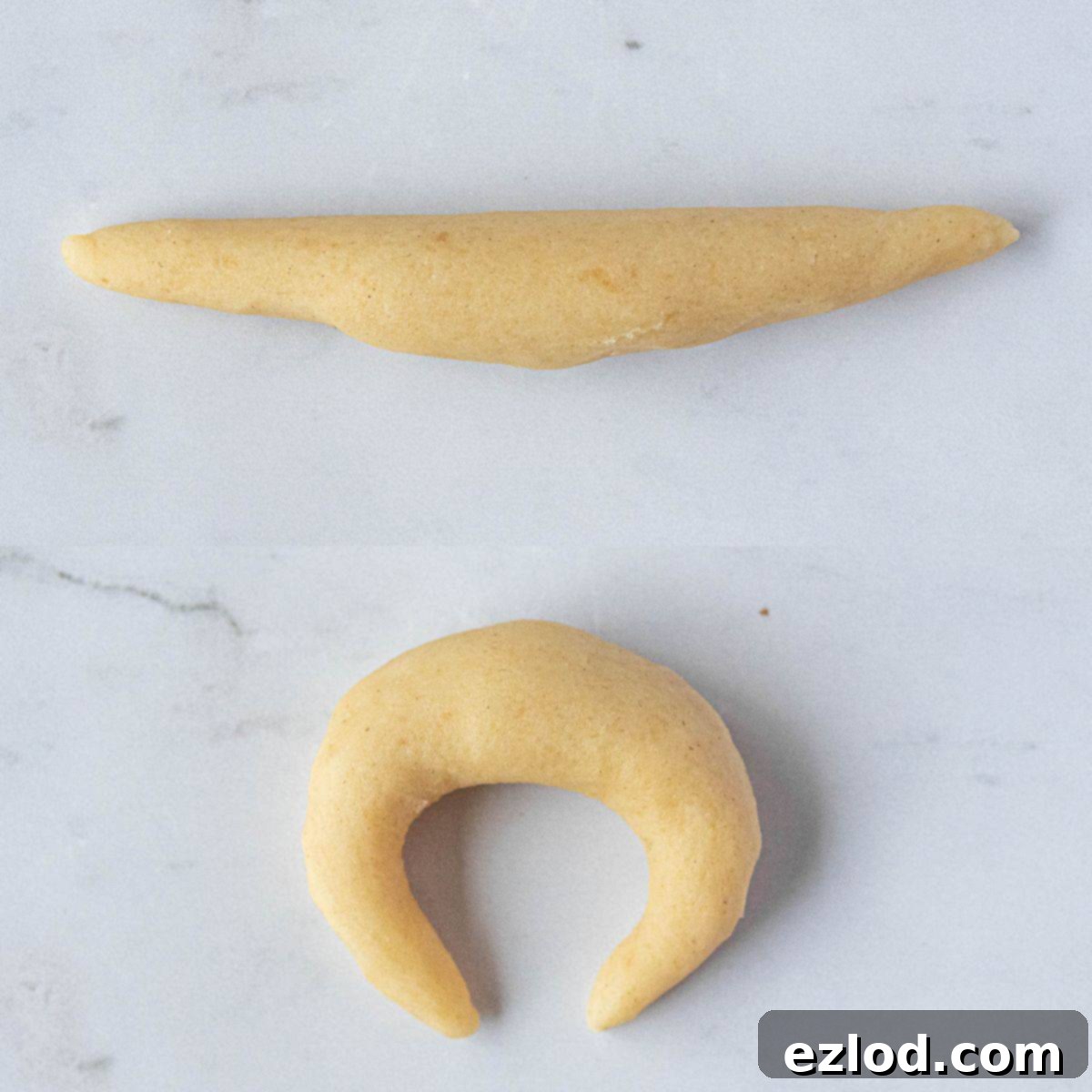
Baking and Finishing:
- Arrange the shaped crescents on one or two baking sheets lined with baking parchment, ensuring they are spaced well apart to allow for even baking. For an extra measure against spreading, pop the baking sheets into the freezer for about 10-15 minutes while your oven preheats to 180°C/160°C fan/350°F/gas mark 4.
- Bake the cookies for approximately 12-15 minutes. They should turn lightly golden around the edges and on the underside, but the tops should remain pale. This indicates they are perfectly baked – still tender but with a slight crispness. Overbaking will make them dry and hard, so keep a close eye on them!
- While the cookies are baking, prepare your coating. In a wide, shallow bowl, mix together the icing sugar and vanilla sugar (if you are using it). This makes it easier to roll the warm cookies.
- Once baked, allow the Vanillekipferl to cool on the baking sheets for about 5 minutes. They will be very delicate when warm, so handle them with extreme care. As soon as they are cool enough to handle without breaking, gently roll each cookie in the prepared icing sugar mixture until it’s thoroughly coated. The warmth of the cookies helps the sugar adhere beautifully. Transfer the coated cookies to a wire rack to cool completely.
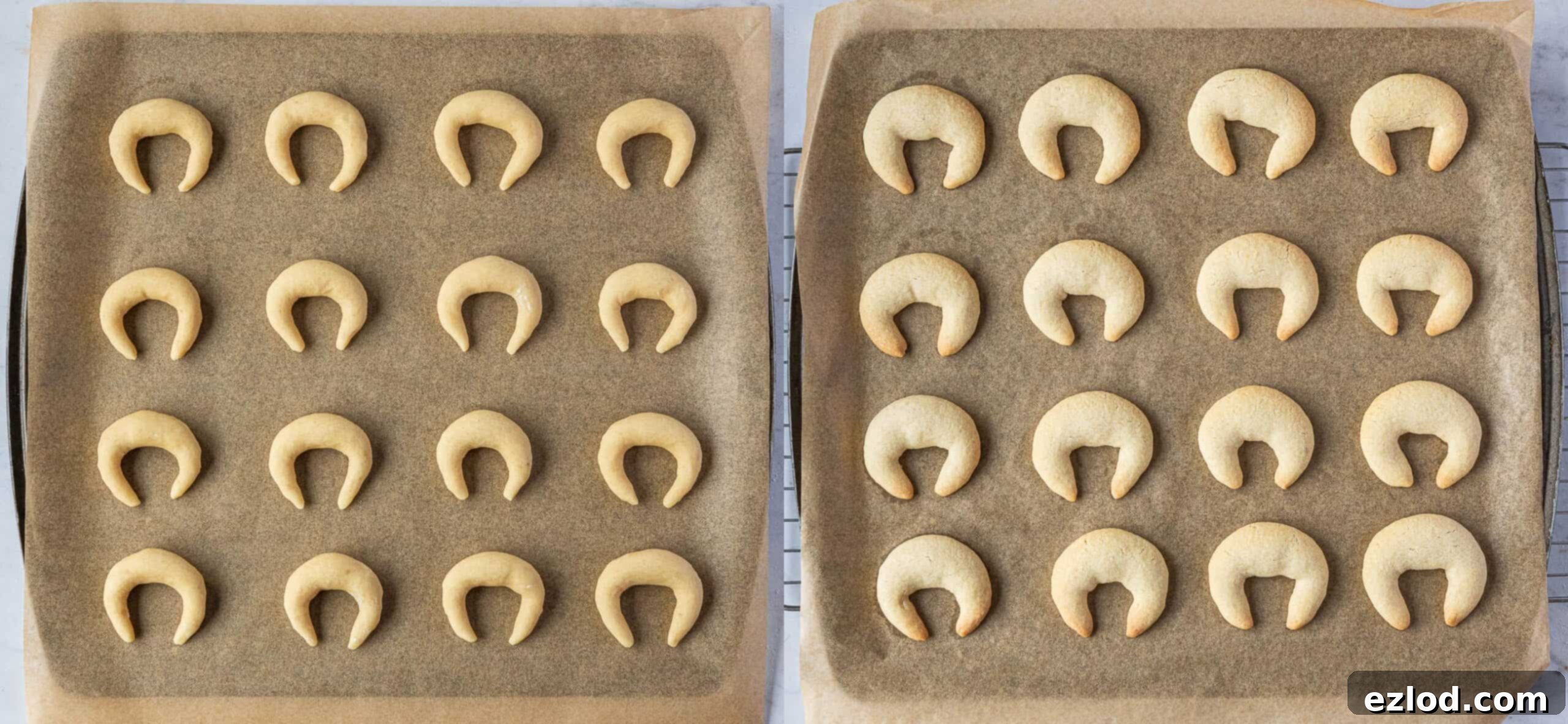
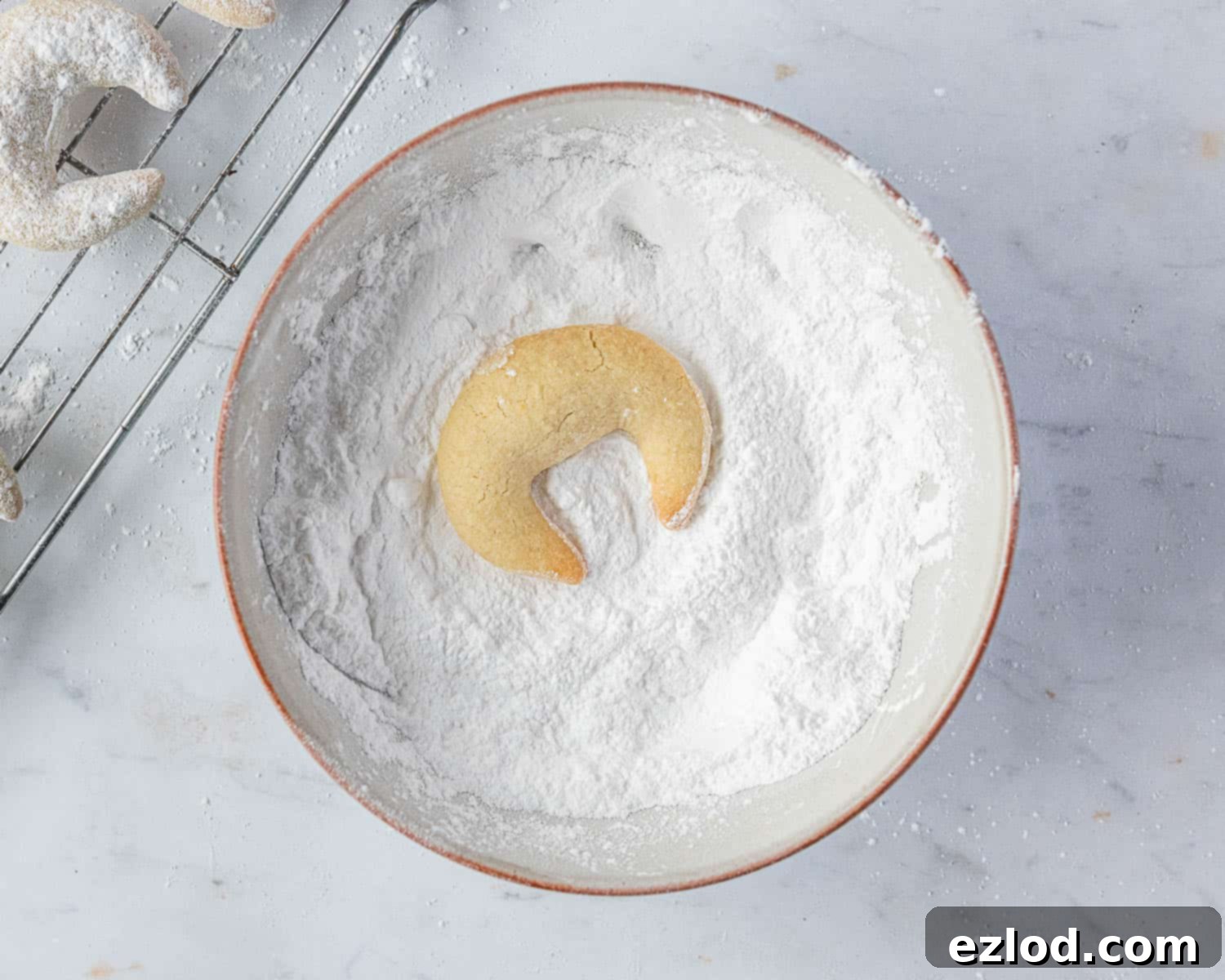
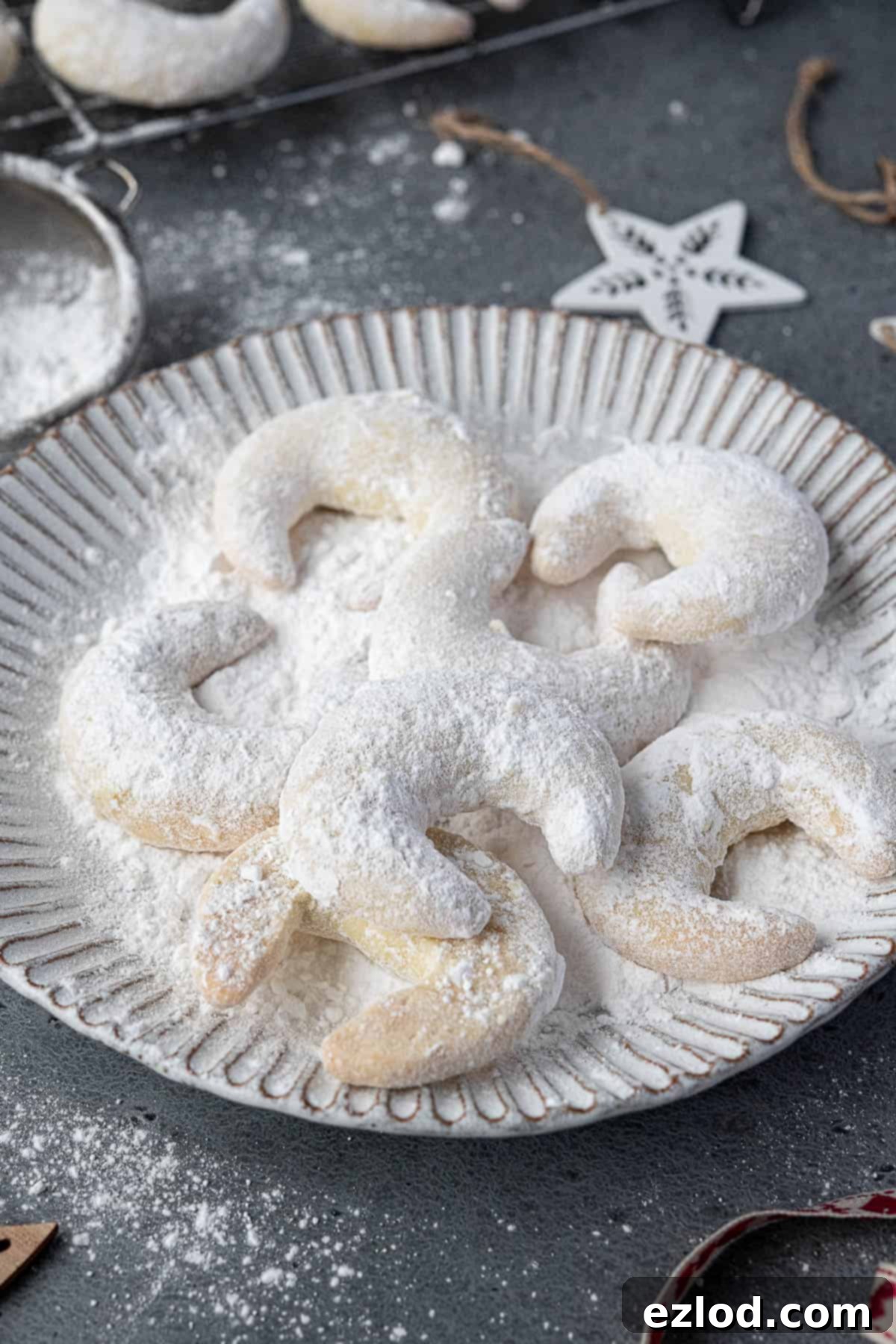
Top Tips for Perfect Vegan Vanillekipferl:
Achieving bakery-quality Vanillekipferl is entirely possible with a few expert tips:
- Embrace Digital Scales: As with all my baking recipes, I wholeheartedly recommend using metric measurements with a digital scale rather than cup conversions. Volume measurements (cups) are notoriously inaccurate and can lead to inconsistent results. A digital scale ensures precision, leading to far better and more reliable outcomes, not to mention it’s often cleaner and easier!
- Handle Dough with Care: Do not overwork the dough. Over-kneading develops gluten, which can make your cookies tough and chewy, rather than beautifully tender and crumbly. Mix and knead just enough for the ingredients to come together into a smooth ball, then stop.
- Consistency is Key for Shaping: Ensure that all your crescents are as uniform in size and thickness as possible. This is crucial for even baking. If some are larger or smaller, they will cook at different rates, leading to some being overdone and others underdone. Weighing out individual portions of dough (as suggested in the recipe card) is the best way to achieve perfect consistency.
- Don’t Skip the Chill Time: Chilling the dough before baking is a non-negotiable step. It allows the vegan butter to firm up, which in turn prevents the cookies from spreading too much in the oven. A chilled dough holds its shape beautifully, giving you those perfectly defined crescents.
- Avoid Overbaking: Vanillekipferl should be pale on top with only a light golden hue around the edges and on the underside. They might still feel a little soft when you take them out of the oven, but they will firm up as they cool. Overbaking will result in dry, hard cookies that lose their signature melt-in-your-mouth quality.
- Gentle Handling While Warm: Once baked, allow the Vanillekipferl to cool on the baking tray for about 5 minutes before attempting to move or coat them. They are incredibly delicate when warm and can break easily.
- Timely Dusting: Roll the cookies in the icing sugar mixture while they are still warm (after the initial 5-minute cooling period). The residual warmth helps the sugar adhere properly, creating that beautiful, snowy coating. If they cool too much, the sugar won’t stick as well.
- Parchment Paper is Your Friend: Always line your baking sheets with parchment paper. This prevents sticking, ensures even browning, and makes for super easy cleanup.
Storage And Make-Ahead Instructions:
These vegan Vanillekipferl are not only delicious but also wonderfully convenient when it comes to storage and making them ahead of time, allowing you to enjoy fresh cookies throughout the holiday season with minimal stress.
Storage of Baked Cookies: Once fully cooled, store your baked vegan Vanillekipferl in an airtight container at room temperature. Kept this way, they will remain fresh, crisp, and utterly delicious for up to two weeks. The container protects them from moisture and air, preserving their delicate texture and flavor.
Make-Ahead Dough: The unbaked dough is quite forgiving and can be prepared in advance. After you’ve mixed and gently kneaded the dough, wrap it tightly in cling film or beeswax wrap and store it in the refrigerator. It will keep well for up to three days, meaning you can split your baking process over a couple of days if needed.
Freezing Unbaked Crescents: To get an even further head start, you can prepare the dough and shape the crescents according to the recipe instructions. Once shaped, arrange them in a single layer on a baking sheet and freeze them until they are completely solid. This usually takes about 1-2 hours. Once frozen, transfer the solid crescents to an airtight container or a freezer-safe bag. They can be stored in the freezer for up to three months. When you’re ready to bake, simply place the frozen crescents on a parchment-lined baking sheet and bake them directly from the freezer; they may just require an additional minute or two in the oven compared to chilled dough.
Freezing Baked Cookies: Baked Vanillekipferl can also be frozen, which is perfect for keeping a stash ready for unexpected guests or for extending the festive cookie joy. Allow the cookies to cool completely, then place them in an airtight freezer-safe container, ideally with layers separated by parchment paper to prevent sticking. They will keep well in the freezer for up to three months. To serve, simply allow them to defrost at room temperature for a few hours. A quick re-dusting of icing sugar might refresh their appearance if desired.
More Vegan Christmas Cookie Inspiration:
- Vegan Chocolate Pistachio Biscotti
- Vegan Gingerbread Biscotti
- Vegan Biscotti with Almonds and Cranberries
- Vegan Chocolate Orange Shortbread
- Vegan Cranberry Orange Shortbread
- Vegan Pecan Snowball Cookies
- Vegan Nussecken
- Vegan Linzer Cookies
- Vegan Shortbread Fingers
- Vegan Gingerbread Cookies
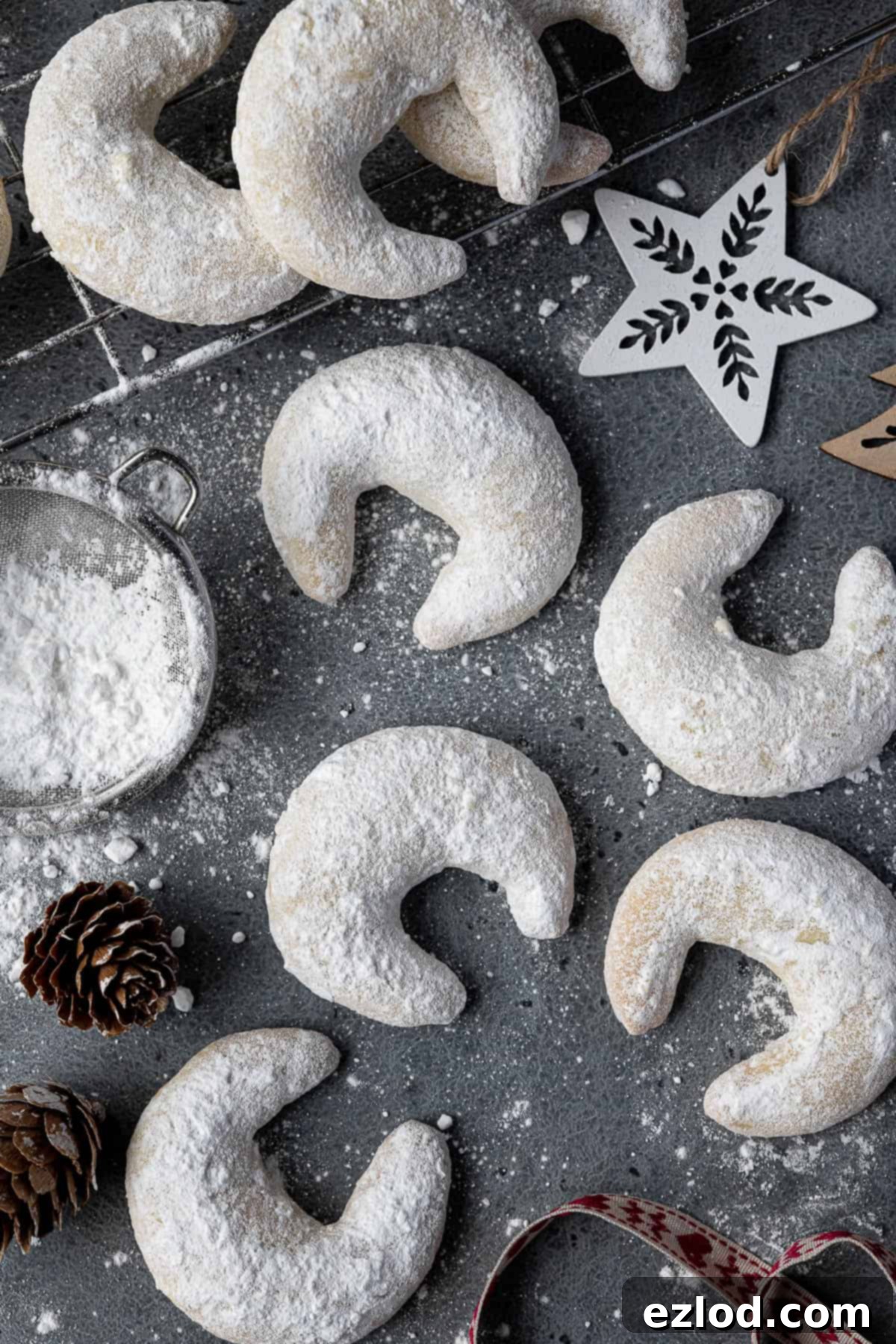
If you’ve had the joy of trying this delightful recipe, I’d love to hear from you! Please consider rating it, leaving a comment below, or tagging @domestic_gothess on Instagram with the hashtag #domesticgothess. Your feedback and beautiful creations make my day!
All images and content on Domestic Gothess are copyright protected. If you wish to share this recipe, please do so by utilizing the provided share buttons. Please refrain from screenshotting or posting the recipe or content in its entirety; instead, include a direct link to this post for the full recipe. Thank you for your understanding and support!
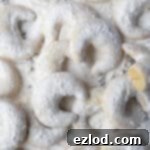
Print
Vegan Vanillekipferl (Vanilla Crescent Cookies)
Ingredients
Dough:
- 125 g (1 cup) plain (all-purpose) flour
- 60 g (⅔ cup) ground almonds
- 45 g (6 Tablespoons) icing (powdered) sugar
- 100 g (⅓ cup + 4 teaspoons) vegan block butter (NOT the spreadable kind. I use Naturli Vegan Block) cold and diced
- 1 teaspoon vanilla extract
To Coat:
- 1 Tablespoon vanilla sugar (optional)
- 60 g (8 Tablespoons) icing (powdered) sugar
Instructions
-
Mix together the flour, ground almonds and icing sugar in a bowl.
-
Add the cold, cubed butter and vanilla extract and rub them in using your fingertips until well combined and no lumps of butter remain.
-
Bring the mixture together into a soft dough and knead gently just a couple of times until it is smooth. Wrap and refrigerate for a couple of hours until the dough is firm.
-
Divide the dough into 20 pieces, I use a scale for accuracy (about 16g each) and roll them into balls.
-
Roll each ball into a small log shape, tapering the ends slightly. Shape the log into a crescent. Lightly flour the surface if necessary.
-
Place the crescents spaced apart on a couple of baking parchment lined baking sheets and pop them in the freezer while you preheat the oven to 180°C/160°C fan/350°F/gas mark 4.
-
Bake the cookies for 12-15 minutes, until golden around the edges and on the underside but still pale on top.
-
Mix the icing sugar and vanilla sugar (if using) in a wide, shallow bowl.
-
Allow the cookies to cool on the baking sheets for 5 minutes, then gently roll them in the icing sugar while they are still warm. Place on a wire rack to cool completely.
Notes
- See post above for tips, details and step-by-step photos.
- As with all of my baking recipes I really do recommend using the metric measurements with a digital scale rather than the cup conversions. Cups are a wildly inaccurate measuring system and you will get far better, more consistent results using a scale, not to mention that it is also easier and less messy than cups!
